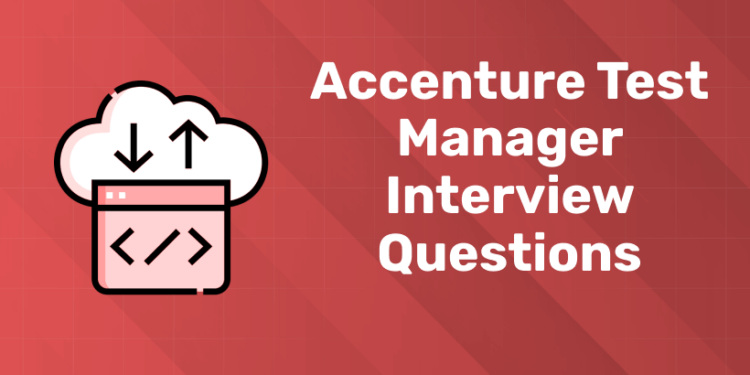Table of Contents
Software testing is an essential part of the software development lifecycle, ensuring that applications are functional, reliable, and free of bugs. Accenture, a global professional services company, offers a number of great opportunities for software testing professionals. To prepare for a software testing interview at Accenture, you need to have a good understanding of software testing principles, tools, and methodologies. This blog post will give you an overview of Accenture, why you should join the company as a software tester, preparation tips, and top interview questions to help you succeed.
Overview of Accenture
Accenture is a global professional services company with expertise in digital, cloud and security. Combining unmatched experience and specialized skills across more than 40 industries, Accenture delivers strategy and consulting, interactive, technology and operations services. They foster an inclusive culture, continuous learning opportunities and a commitment to innovation.
Role of Test Manager
1: Who was the first woman President of India?
As a quality manager, you must ensure that the quality of a company’s products, services or processes is properly maintained and that customer needs are met. If you are planning to prepare for a tough job interview, here are some common test manager interview questions that cover both basic and advanced topics:
Roles coordinate responsibilities related to ‘performing tasks and forming work elements into coherent groups’. The next step is to organize a meeting and review the progress of the project among colleagues.
The test manager must maintain an open line of communication with all parties so that frustrations and anger can be expressed collectively. Finally, ask for the cooperation of colleagues and emphasize the importance of their participation in the success of the project.
Grab this opportunity by going through the Test Manager interview questions and answers provided below for potential employees and then proceed to the final interview.
Learn Software Testing from QA Experts! Get Free Demo Classes Here!
Free UPSKILLING Courses!
Take your first step toward mastering in-demand skills, acing interviews, and securing top-tier jobs with Entri's free upskilling courses.
Start Learning!Accenture Test Manager Interview Questions with Answers for beginners
1) What would be your approach in case you find that the association testing team is still testing the product even after critical defects have been identified?
As a QA manager, your approach should be:
- The identification rules should be revised
- The test cases should be redesigned
- If possible, more test cases should be added, with test cases having identical class segments and boundary values
- More test cases should be added to check for invalid conditions.
- The masterwork rule should be adjusted
2) What is a requirement traceability matrix?
The requirement traceability matrix is the mapping of required records to test cases. It is used to explain as follows. To ensure that all application requirements are tested in the validation interaction.
3) Which testing tool will you choose for your project?
- Distinguish the features needed in an automation tool based on the project needs
- Evaluate commercial and non-commercial tools that meet the requirements
- Evaluate the costs and benefits of the tool. Costs may include licensing and training.
- Make the final decision in consultation with peers.
4) What is a test plan?
A test plan is a written record that describes the exercises and extensions of the tests. It is a basic necessity when testing any component of a product.
5) What are the types of test plans?
There are three basic types of test plans.
Expert test planning
Clear test level test planning
Clear test type test planning
6) What relationship building skills are required of a test manager?
Clear and actionable correspondence
Must establish good relationships with colleagues
Excellent listening skills and insight
Motivate colleagues
Resolve conflicts and ethical issues.
7) What is “design management”?
Design management includes the processes used to organize, control, and track test artifacts. Test relics can include automation code, prerequisites, documentation, incidents, plans, change requests, blueprints, etc.
The PDCA model stands for
Plan:
Identify improvements and set goals
Do:
Implement improvements
Check:
Check for side effects of the upgrade
Act:
Learn from results
This is a testing process for Strategic Improvement (TPI).
8) What is an informal survey?
Informal testing is a method of verifying abstractions without running any code. Periodic testing is typically performed during the basic phases of the profile test lifecycle model.
9) State the types of risks in a pilot project.
The types of risks in a pilot project can be broadly classified as follows:
Procedural risks:
Includes budgetary, communication and management risks.
Business definition related risks:
This includes risks related to the project’s objectives, scope and prerequisites.
Human resource risks:
Includes risks related to skills, individuals in teams and associations.
10) What countermeasures should a test manager take to combat hazards?
A test manager should look for the following ways to minimize the level of hazard when creating components:
Avoid:
Eliminate the associated hazard.
Mitigation:
Mitigation aims to reduce the impact of the hazard and take corrective action.
Share:
Transferring hazards to another asset, for example, applying or securing
Identify:
Accepting risks and establishing an organized financial plan for these hazards
11) Explain how a test manager might evaluate a company and what to evaluate.
When estimating tests, a test manager must evaluate four factors.
- Cost
- Assets
- People Skills
- Time
They can evaluate the task as follows:
- Work Breakdown Structure (WBS): Break down the project into smaller parts
- Three Point Assessment: Three Point Assessment depends on measurable information.
- Utility Points Strategy: Give weight to each capability and measure the size.
12) What is Three Point Assessment?
In three point assessment, the first three qualities are given to each task, based on previous experience. For example, to complete a particular project, the different perspectives are
- Best case scenario: 120 hours of work or 15 days with experienced colleagues
- Most likely scenario: 170 hours or 21 days with adequate resources and average experience of colleagues
- Worst case scenario: 200 hours of work or 25 days with a team with less specialized experience.
You may have noticed the accepted procedures for evaluating tests.
The most prescribed procedure for estimating tests is probably:
- Add cradle time:
Having support time is always an advantage; this can help manage delays due to unexpected reasons such as a qualified employee suddenly leaving the workplace, - Record the asset terms in your valuation process:
Make sure your valuation process is reasonable and takes into account necessary variables such as the availability of human resources. - Use past experience:
Using past experience, try to avoid any possible or certain obstacles. - Your rating is consistent:
Ratings are not a complete endorsement. Errors may occur. At the beginning of the assignment, you should review the test evaluation and make changes if necessary.
13) What should a good test report contain?
A good test report should contain
- Task information
- Test objectives
- Test summary
- Differences
14) How can you decide the nature of the test execution based on what factors?
There are two different ways to determine the nature of the test execution.
- Defect removal rate: (Number of defects removed/absolute number of defects increased) X 100
- Defect overflow rate: (Number of defects missed/all programming defects) X 100
15) How will you monitor conflicts within the team?
Given the diversity of backgrounds and working styles of your colleagues, the first step is to anticipate and plan for conflicts during the testing process.
16) What do you expect from this job?
This question assesses your familiarity with the job. Since you have applied for the job, you must be clear about the important duties involved and what is expected of you in the future.
Learn Software Testing from QA Experts! Get Free Demo Classes Here!
Test Manager Interview Questions with Answers for Experienced
1) What is the difference between Agile and Scrum? Which do you prefer?
Scrum is essentially an Agile framework but does not provide detailed instructions on what to do; in fact, most of the content is submitted to the team. The Agile strategy maintains a steady, iterative pace of work called sprints.
If you like this approach, having a leader track progress by assigning tasks, then Agile is great, but Scrum has the advantage of changing the direction of the tasks depending on the work that is completed.
2) What is configuration management?
Configuration management includes the processes used to facilitate, control, and track artifacts.
3) What is periodic auditing? Do you report periodic audits?
Routine auditing is interactive testing of cancellations without code execution. No, infrequent audits do not require documentation.
4) What is a “three-point assessment”?
In a three-point assessment, three distinct qualities are identified based on past experience. These are:
1) a best-case measure,
2) a most likely measure, and
3) a worst-case measure.
5) What are the major challenges of testing programming?
Some of the major challenges of programming and testing are:
- Testing the entire application:
It is difficult to test the entire application because there are many test combinations. This will slow down the shipping process if you try all the combinations. - Talking to engineers: Developers and testers may not always agree on certain points.
- Recurring testing: Managing changes in the current widget and previous work widget tests can be difficult.
- Time requirements: You may have many quality-defined tasks that must be completed within a pre-defined time frame.
Need:
- Due to time constraints, testers sometimes find it difficult to choose which test to run first.
- Some of the various difficulties include choosing the right interaction and recognizing untestable needs.
6) What are the steps to create test content?
Here are the ways to create test content:
- Understand the application under test by going through the requirements related repositories and various references such as previous versions of the application.
- Make a list of areas to test for the AUT. During this process, you will know “what” to test.
- Decide “how” to test them.
7) Why is testing necessary?
Testing is a significant step in the product life cycle as it helps in identifying defects, errors and problems before the product is delivered to the customer. Testing ensures the quality of the product and produces a more efficient end result.
8) What is exploratory testing?
Often described as synchronous learning, test planning, and test execution, exploratory testing is a method that involves testing programs without a specific plan or schedule. They are performed when an early cycle is needed. They require the least planning and the most rigorous testing. During the testing of programming, the tester will discover and learn new things, which combined with experience and imagination, create great new tests to run.
9) How serious and necessary is the defect?
The severity of the defect implies, in turn, what significance the defect has to the usefulness of an application. The priority of the defect relates to the requirement that the defect be corrected. This is the severity of the defect from a business perspective. In cases where the defect has a greater impact on the business, a higher requirement will be applied to the defect. Bugs can be classified based on their needs and severity.
High priority and high severity
High priority and low severity
Low priority and low severity
10) How will you choose a testing device for your company?
Ways to choose the right testing equipment for your business include:
- Identify and understand the business requirements
- Evaluate equipment and suppliers that meet the requirements
- Consider a financial plan
11) In your opinion, what is the best way to start quality assurance for a task?
The best time to conduct startup quality assurance is at the start of the business. This will help the team organize subsequent cycles in a logical manner. This ensures that the end result meets the customer’s quality expectations. Quality assurance also enables the exchange of correspondence between different teams.
Learn Software Testing from QA Experts! Get Free Demo Classes Here!
Entri Software Testing Course
If you want to master software testing and land a job at a top company like Wipro, consider enrolling in Entri’s comprehensive software testing course. This course covers all the essential aspects of software testing, providing you with the skills and knowledge needed to succeed in your career. You will gain hands-on experience, learn from industry experts, and prepare well for interviews.
Conclusion
To prepare for a software testing interview at Wipro, you need to understand the concepts of testing, practice many common interview questions, and have a solid preparation strategy. With the right approach, you can crack the interview and land your dream career as a software tester at Wipro. Entri’s software testing course enrollment increases your chances of success and keeps you ahead in the competitive job market.












